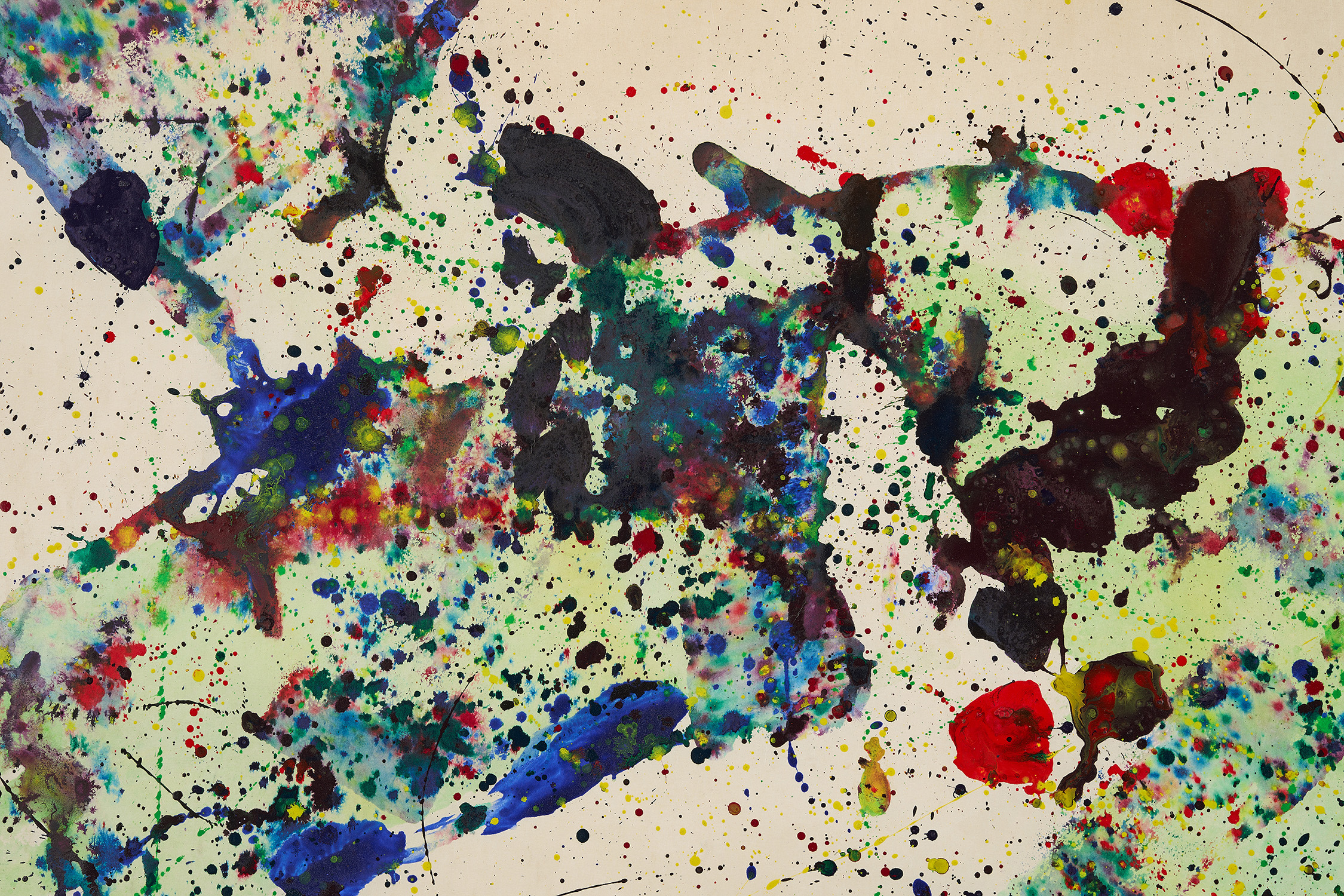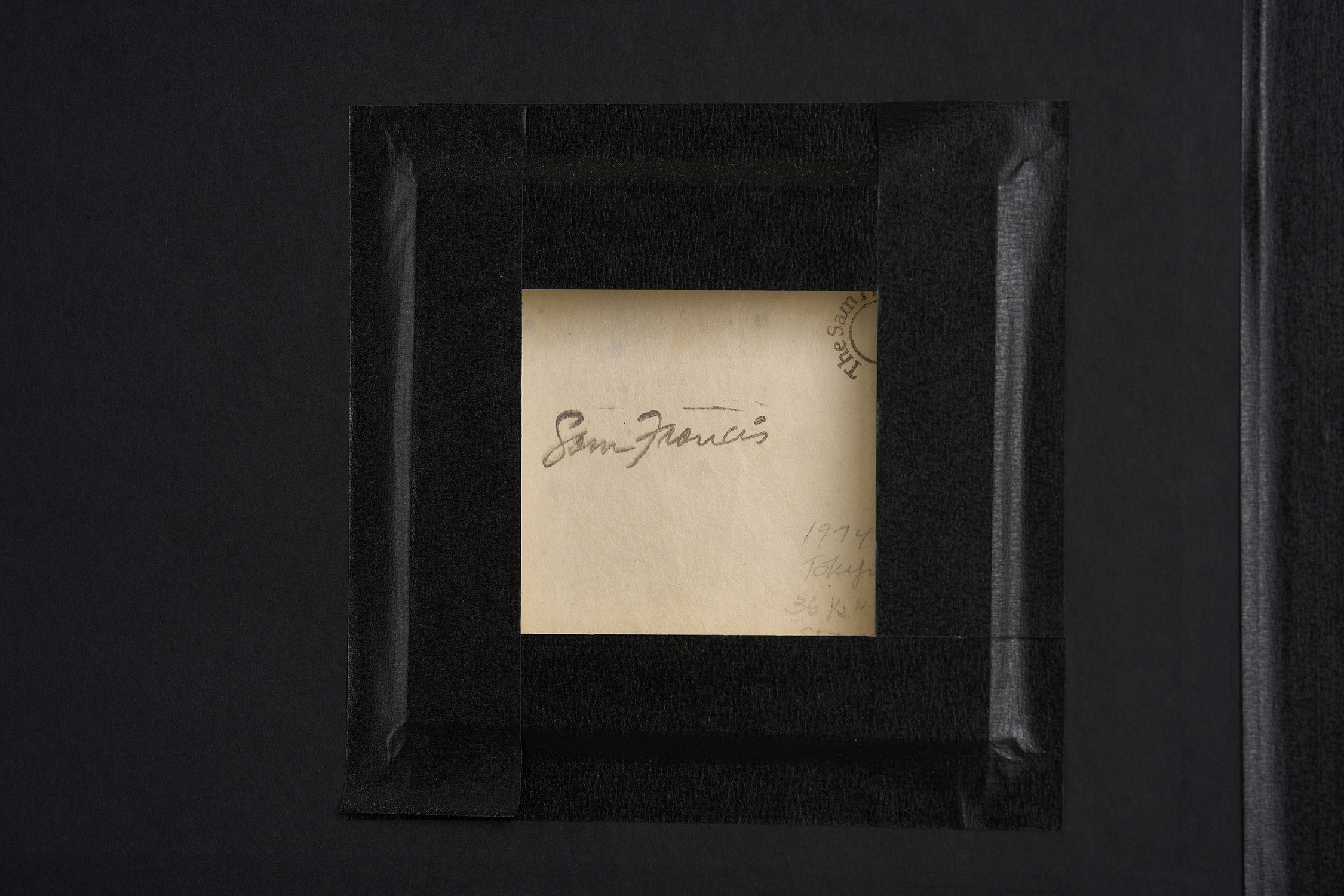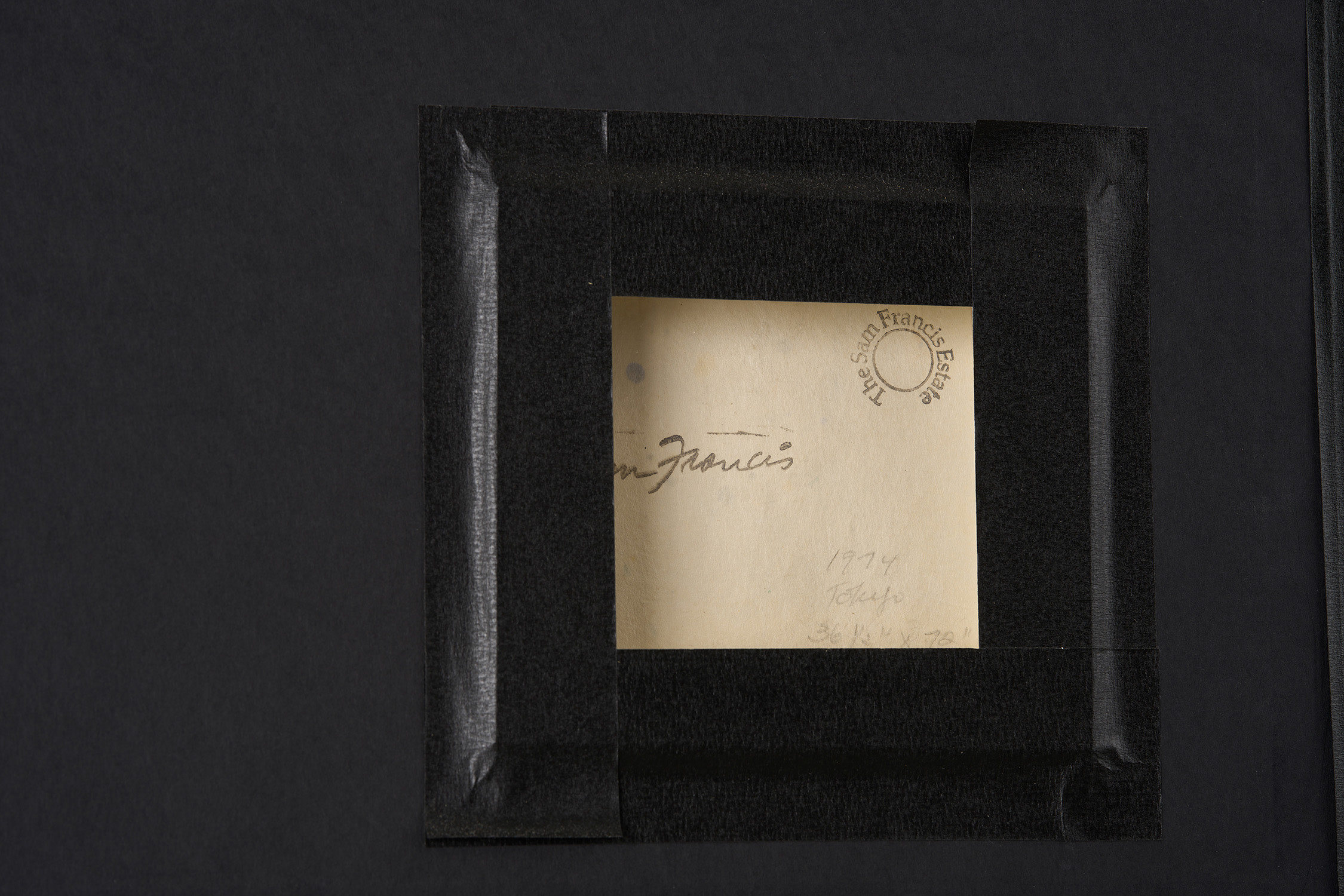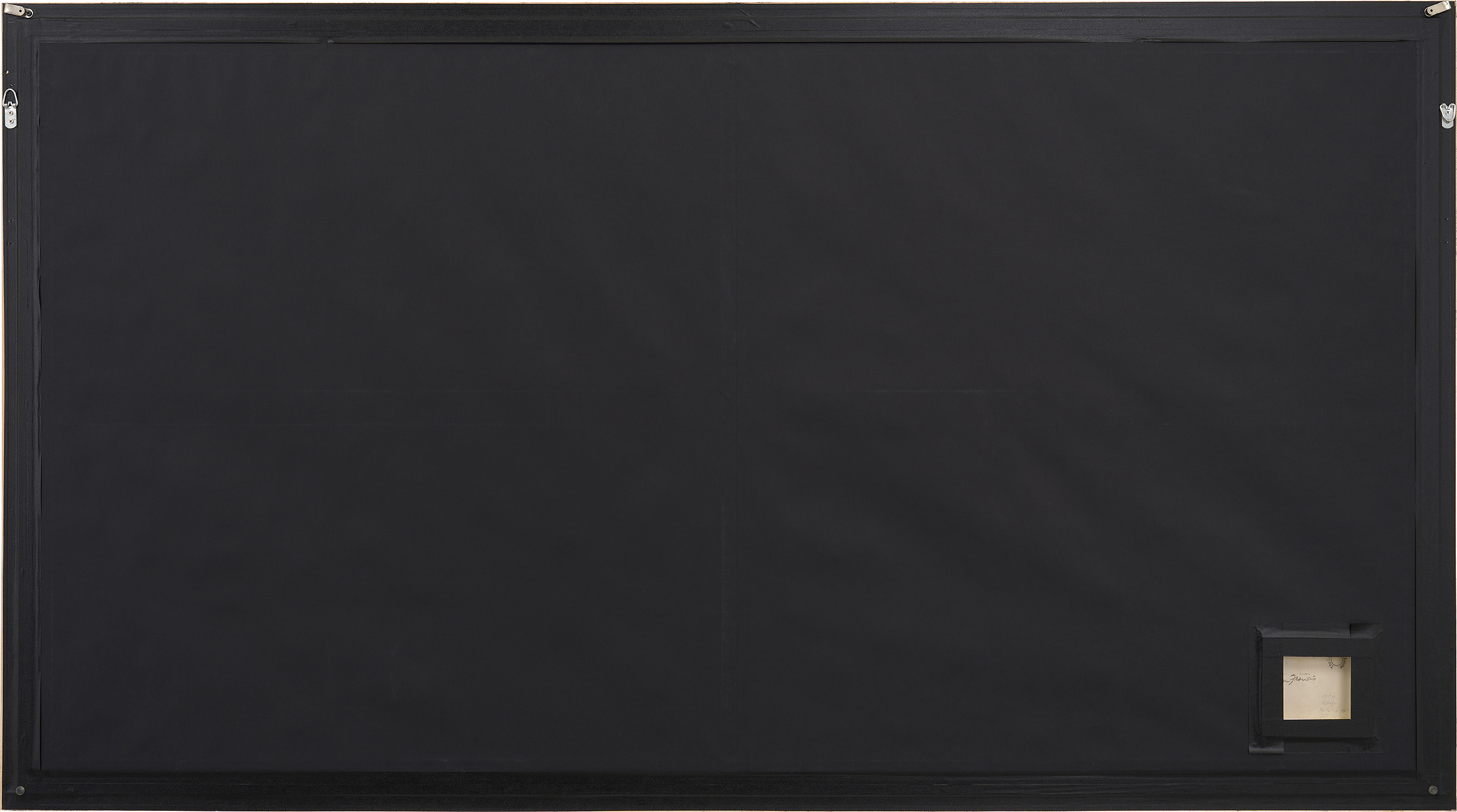













Property of an Important Asian Collector
31
Sam Francis
Untitled
inscribed by studio assistant '1974 Tokyo 36 1/2’’ x 72’’ SFT74 92' on the reverse; further stamped with the Sam Francis Estate logo and facsimile signature stamp on the reverse
acrylic and gouache on paper
92.7 x 182.9 cm. (36 1/2 x 72 in.)
Executed in 1974.